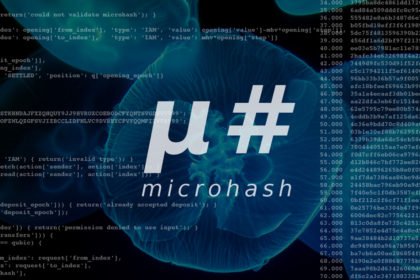The fourth layer of IOTA’s complex smart contract system provided a glowing launchpad for MicroHash, the earliest smart contract available on the platform.
Nowadays Ethereum environment is considered as the most prominent example of a smart contract framework available on blockchain. Indeed there are only few decentralized cryptocurrency protocols able to support verification and execution of transactions since the technology requires complex and reliable background.
However, once an innovative concept of smart contracts was at first introduced to the wide audience, it immediately wrought public attention, since the disrupting scheme bypasses middlemen, thus saving on overheads and paperwork. Any essential details and information needed for a transaction confirmation are captured in the immutable digital ledger.
Obviously being a single provider of the robust technique Ethereum blockchain has been exhibiting scalability problems that in turn triggered the development of alternative protocols. The ambitious industry player IOTA (MIOTA) conceives to compete with the notable Ethereum-backed smart contracts.
According to the recently made announcement, the other day MicroHash, a smart contract on IOTA’s core protocol, has been launched. Since its inception the platform has native incompatibility with enforced decentralized digital contracts that today was successfully overcame owing to the complex fourth-layer smart contract system deployed on the network.
Despite being built on IOTA’s core protocol, MicroHash is not able to use IOTA directly, as a result it was structured in a way that uses quorum consensus framework Qubic Lite and a qApp build on said framework named TOQEN.
The group of layers utilized for the smart contract implementation follows a certain hierarchy. The first layer – or Data Integrity layer – is IOTA’s core protocol Tangle, which would serve for data transmission, data integrity, and data persistence.
Further comes the second layer also known as Service layer that consists of aforesaid framework Qubic Lite. This is placed on top of IOTA, and it serves as the basis for running smart contracts. The IOTA Foundation has said that Qubic will facilitate the non-native support for smart contracts, but has yet disclosed none of technical peculiarities.
The third layer – or Application layer – is TOQEN. As stated before, the indigenous IOTA token does not assist smart contracts, therefore it was essential to build an independent qApp on top of the Tangle that would simulate a blockchain, thus solving this issue. This app is called TOQEN.
And finally, the fourth layer, is the smart contract called Microhash. According to the official press release, this contract allows users to send micro-payments via hashes the creator decided to call “microhashes”, stating that it was developed to mimic Bitcoin Lightning Network or IOTA’s Flash Channel, but for TOQEN.
Consequently the launch of Microhash on IOTA signals a start for more smart contracts being deployed to IOTA’s distributed ledger platform and its related layers, meaning that Ethereum will begin facing new competitor with fresh outlook on how to update the idea and utility of smart contracts.
The IOTA Foundation, in particular, is a worthy opponent that is gradually gaining pace in a race over the industry dominance. As reported by Coinspeaker, IOTA (MIOTA) has signed a strategic partnership with Volkswagen, Bosch, and Fujitsu to use its Tangle Technology to automate their products and services.
next